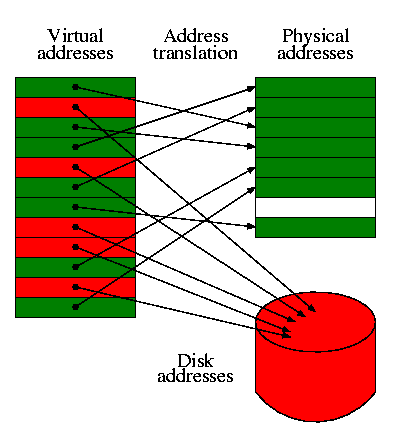

Page frames are used to store pages that are currently in use by a program. The total number of page frames available is determined by the amount of physical memory available in the system. Each page frame typically contains one page of memory. Page frames are the blocks of memory used to store the pages of a program. The size of the page frame is not fixed it varies between platforms in the power of 2. It is used to structure physical memory in OS.

Because of this many programs can also run at the same time when one program gets the required page the other can get its required pages. It ulcer reduces the startup time of the programs and also makes the I/O faster. This approach saves memory resources and allows the programs to run even if they require more memory than is available. In this technique, only the pages that are required are loaded into the memory, rather than loading all the pages at the start of the program. It is one of the memory management techniques that is used by operating systems. The program can now access the required page, and the execution of the program continues. The operating system updates the page table to indicate that the page is now in physical memory, and then returns control to the program. The operating system then reads the required page from the hard disk and stores it in physical memory. The page fault interrupts the program and transfers control to the operating system. When a program attempts to access a page that is not in physical memory, the operating system generates a page fault. The operating system uses a page table to keep track of which pages are in physical memory and which are on the hard disk. The pages that are not loaded into physical memory are stored on the hard disk. When a program is executed, the operating system loads some of the pages into physical memory. Each page is typically 4 kilobytes in size. Virtual memory works by dividing a program into small sections called pages. The operating system will swap the necessary portion of the program back into physical memory when the user tries to access a portion of it that has been moved to the hard drive.

The user is unaware of the swapping procedure because it takes place in the background. Physical memory is loaded when a program is run, but if there is not enough space, the operating system will move some program components to the hard drive.
#Virtual memory software#
Virtual Memory in OS organizes the physical memory in various parts and keeps note of all the available and used memory and it is also known as the page table.Ī computer can run the software by combining physical memory and hard disk space with virtual memory. In simple words, we can also say that virtual memory in os makes an illusion of extra memory than available physical memory. Virtual memory in OS is a memory management technique that enables or allows the computer to execute larger programs or multiple programs together that would not be possible by using only the available physical memory. While moving further in this article we will learn all about Virtual memory in OS, how it works, its benefits, limitations, and various processes and techniques associated with it. Virtual memory in OS is one of the main reasons for the rapid growth and advancement of technology as virtual memory in os allows the computer to use more memory than is physically available. The computers use operating systems that use the data from the memory. Without data, we will not be able to do anything.


 0 kommentar(er)
0 kommentar(er)
